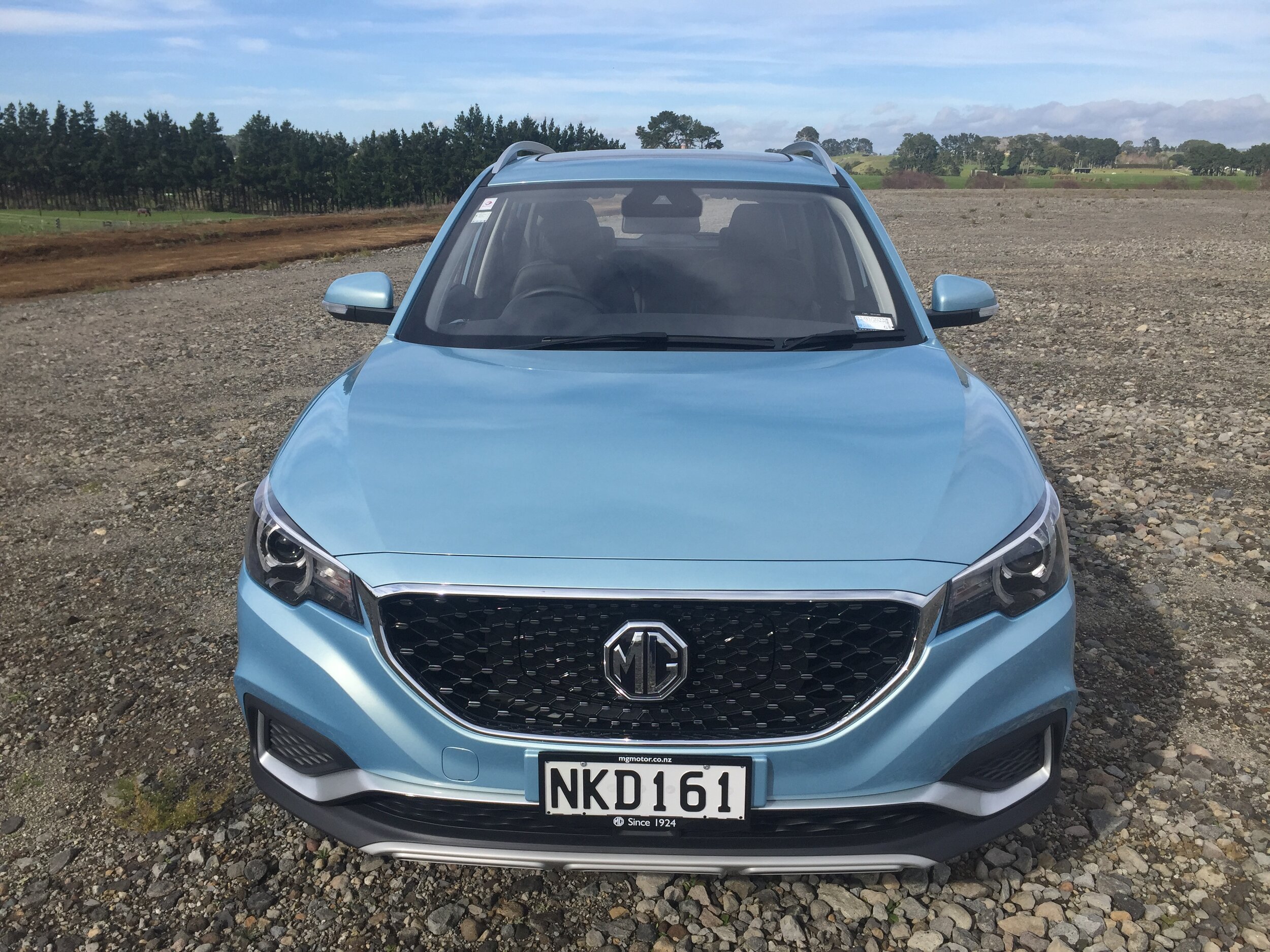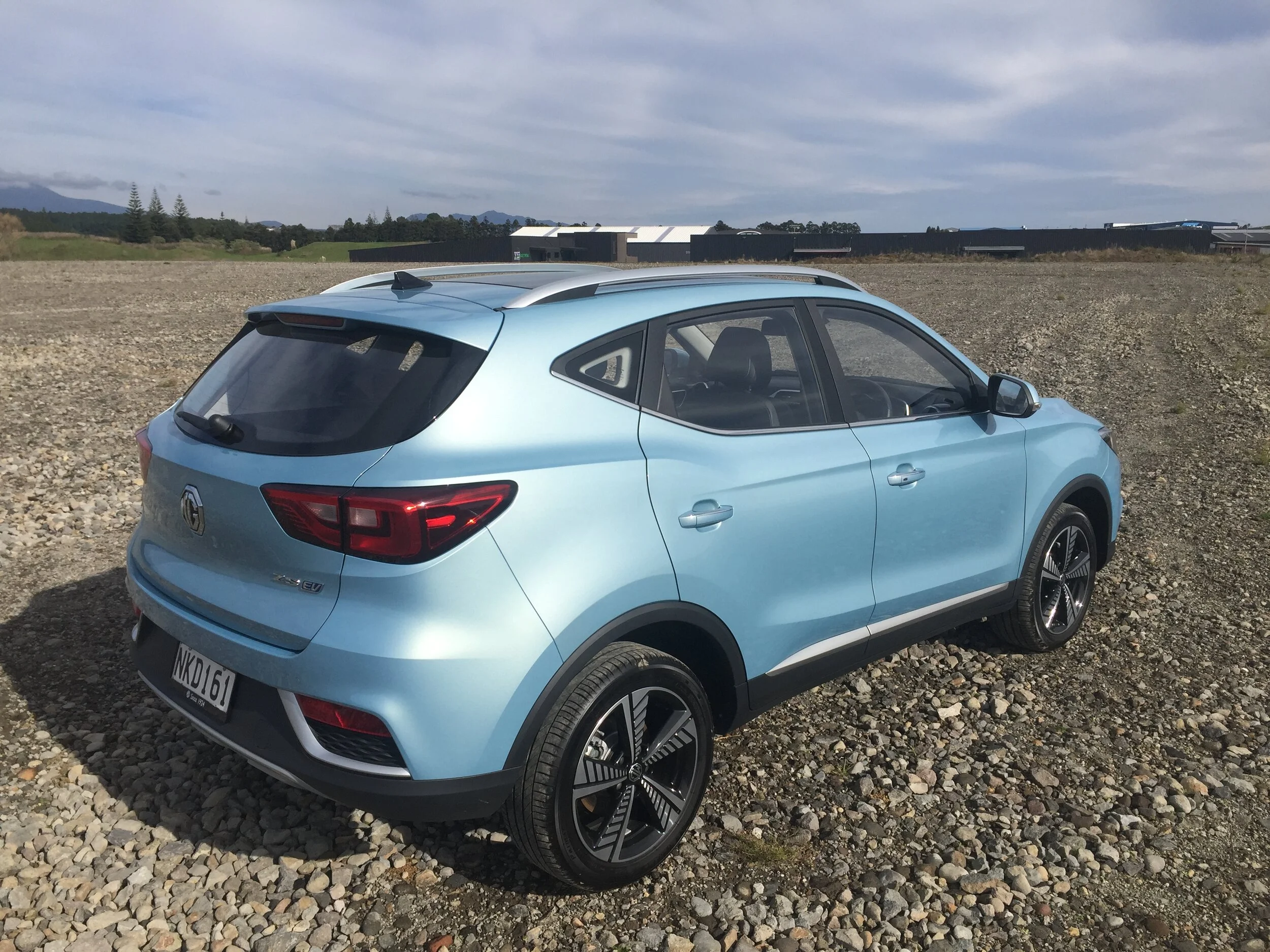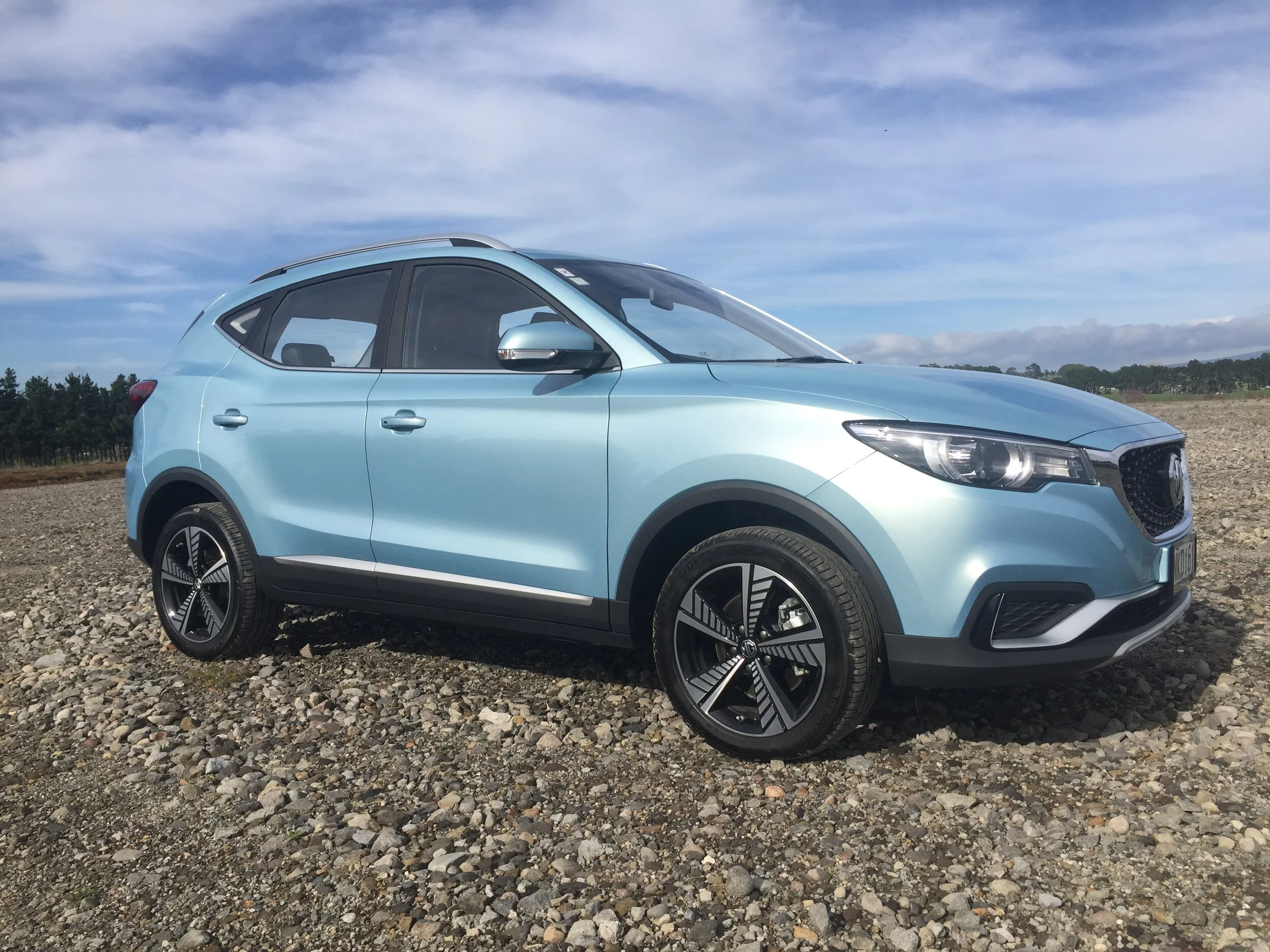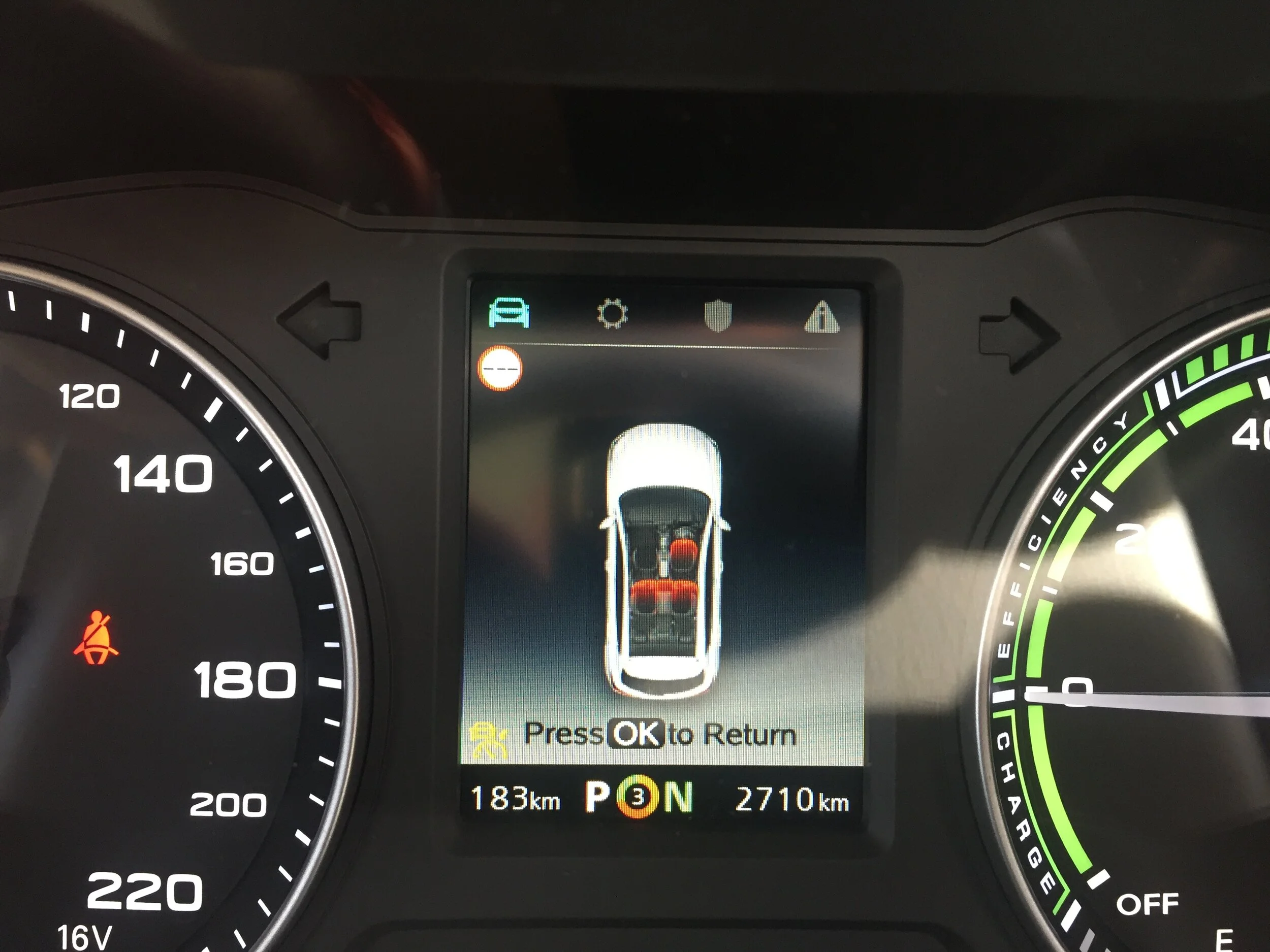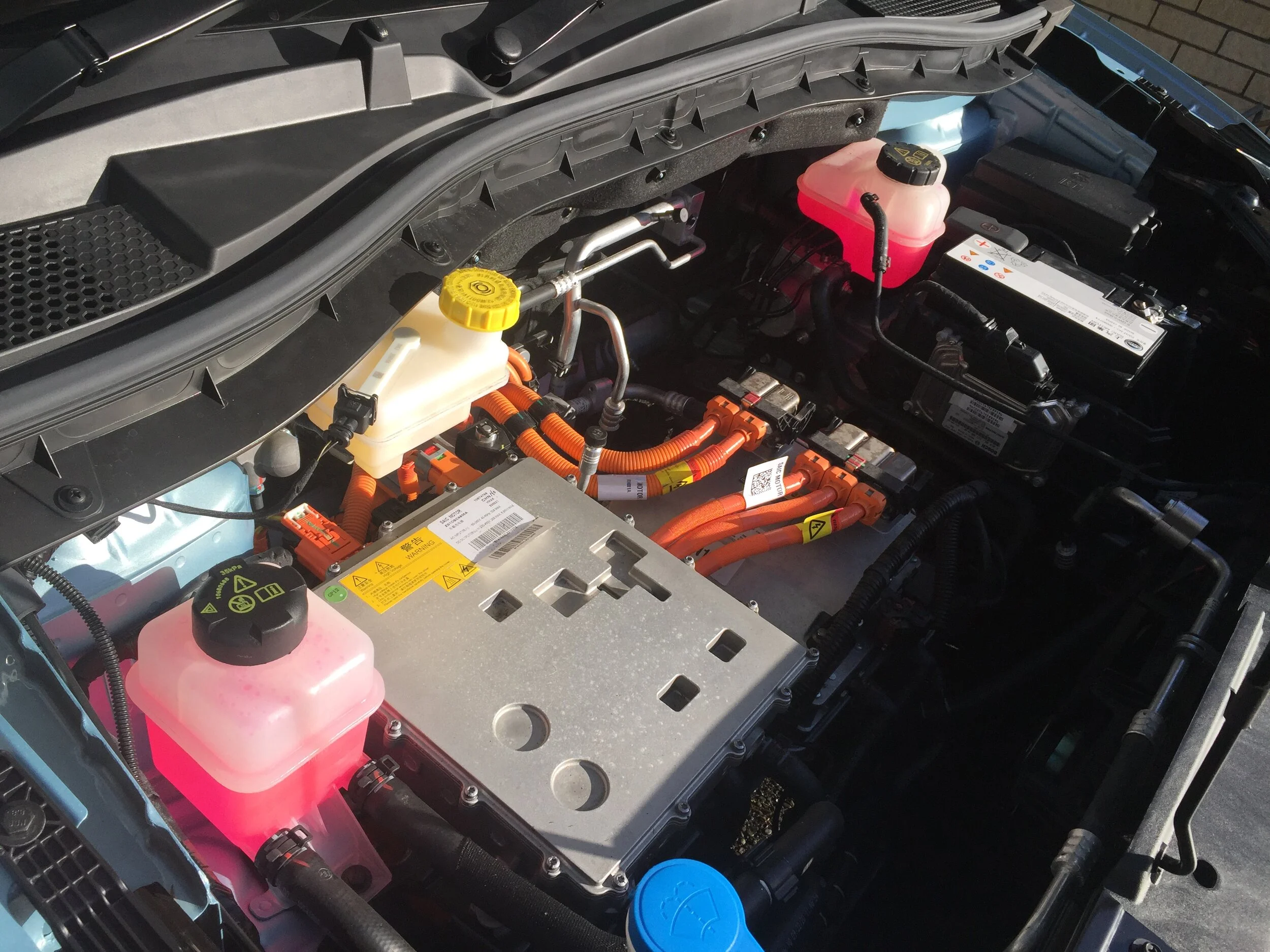MG ZS EV review: Taking the high road from China
/New Zealand’s most affordable new electric vehicle … at the expense of quality?
Price: $48,990 ($40,365 with full Clean Car rebate)
Powertrain and economy: Synchronous electric motor with 44.5 kWh liquid cooled lithium-ion battery, 105kW/353Nm; consumption 18.6 kWh/100km; claimed range 263km; automatic transmission; front-wheel drive.
Vital statistics: 4314mm long, 1644mm high, 1809mm wide, 2585mm wheelbase. Luggage space 359-1187 litres. 17-inch alloy wheels.
We like: Strong value with rebate; good level of standard specification, high level of safety specification; sound drive due to lowered centre of gravity; electric range seems accurate.
We don’t like: Some active safety items can be intrusive; body is the pre-facelift design.
THERE I was, behind the wheel of a vehicle its distributor claims to be New Zealand’s most affordable electric vehicle, driving into a monster of a winter rainstorm.
The lashing rain began to flood the highway and visibility reduced so much, I first slowed to a crawl, and then ultimately elected for safety’s sake to find a safe stopping spot.
And as I sat there waiting for the downpour to ease, I began to ponder a few obvious questions. Such as: Is it safe to operate an electric vehicle in the wet? And: Does the ‘most affordable’ claim translate to ‘cheap and cheerful’ in the unfortunate sense of the word, particularly in relation to level of protection against water ingress?
The vehicle I was in was a Chinese-built MG ZS EV small sport utility. Yes Chinese, despite the brand’s very English name that harks back to the days of Morris Garages. It’s a quality vehicle too – probably better than any MG ever produced out of UK - and it is a value package with petrol-engined versions retailing here for as low as $22,990 for a 1.5-litre Excite and up to $33,990 for a 1.3-litre turbocharged Essence. That’s good buying.
The single EV version, which is specified to the top Essence level, retails for $48,990 which of course reduces to $40,365 once the Government’s Clean Car rebate of $8625 is factored in. That makes it easily New Zealand’s least expensive new EV, with a rebate-included price in amongst the RRPs for similarly-sized hybrids.
The good news is that to my eyes the price isn’t at the expense of quality – or safety. And that includes protection from the effects of water.
Following my little incident with the winter downpour, I was interested to learn that an outfit called the International Electrotechnical Commission administers such a thing as an Ingress Protection Code (IP), which classifies and rates degrees of protection provided by mechanical casings and electrical enclosures against intrusion by the likes of dust and liquid.
The ZS EV is rated at IP67, which tells us the vehicle’s fully sealed high voltage battery and electrical system is rated to the highest level of protection. The 6 tells us it passed a test involving dust being blasted at the system for eight hours, and the 7 confirms the system still worked after sitting under 15cm of water for at least 30 minutes.
So there, New Zealand winter rain. I didn’t need to worry at all during that downpour – the biggest danger was the traditional one of not being able to fully see where I was going.
Most should know by now that the famous Brit marque MG, which has a history going back to 1920, is now owned by China’s SAIC Motor, having being purchased in 2005 by the Nanjing Motor Group, which two years later merged with SAIC, China’s biggest auto company.
The ZS small crossover was launched in 2017, and it is now the MG brand’s biggest-selling model in international markets. It is contributing massively to SAIC Motor’s plans to sell more than 550,000 vehicles overseas this year, this number growing to 1.5 million international sales by 2025.
MG brand is performing well in New Zealand too, moving up to 10th in passenger vehicle sales year to date to the end of July via 1993 registrations. The ZS has achieved 70 percent of that total, with July a particularly good month, its 270 registrations eclipsing the likes of Hyundai Kona, Mitsubishi Eclipse Cross, Suzuki Vitara, and Kia Stonic.
And of those 270 July sales, 188 of them were the EV model. My understanding is it could have been a lot more too, but MG New Zealand ran out of stock. I further understand the distributor is now urgently trying to source more of the vehicles, potentially by intercepting consignments bound for either Australia or Thailand, to take full advantage of the current Kiwi boom in EV sales resulting from the Clean Car subsidy announcement.
Apart from the entry 1.5-litre ZS Excite, the remainder of the petrol versions are facelifted ZST models with new-look front and rear designs and which carry a host of active safety features packaged together in what the brand calls MG PILOT. Meanwhile, although the EV version uses the pre-facelift body design, it carries the top facelift specification including the MG PILOT safety.
One thing I do like about the vehicle’s exterior design is that it doesn’t look like an EV. It does have EV-specific alloy wheels but they don’t look anything special, and the electricity charge points are hidden behind a front grille that looks entirely conventional. What all this means therefore is that only way an onlooker can guess this is an EV is by spotting a small EV badge on the vehicle’s rear flank.
The interior is slightly more obvious, however. In stark contrast to the standard ZS models with their stick gear shifters, the EV has a rotary gear selector to choose reverse, neutral and drive. And just north of that there are three rocker switches – one to choose Eco, Normal and Sport drive modes, another called KERS (Kinetic Energy Recovery System) which is used to boost the level of stored electricity under braking, and the third is called Battery and is used to indicate the vehicle’s remaining range.
Not that you need to select that Battery switch, because the remaining range is permanently displayed on the dashboard anyway. But oh, well…
The ZS EV’s synchronous electric motor is powered by a 44.5kWh liquid cooled lithium-ion battery, and it offers a modest 105kW of power but 353Nm of torque that, in the tradition of all electric vehicles, is instantly available. It’ll get to 100kmh in just over eight seconds, which is rather good considering all that battery weight contributes to a kerb weight of 1532kg which is 237kg more than the heaviest petrol-engined ZS.
Behind the grille are Type 2 and CCS charge points, which are accessed simply by pushing the vehicle’s big MG badge to make the grille pop open. It is estimated it will take around seven hours to charge using a 7kW fixed wall charger, or up to 33 hours using an 8 amp charger plugged into an ordinary household socket. Or, if a public 50kW CCS charger is used, it’ll get to around 80 percent charge in around 45 minutes.
The big point about these estimates is that they assume the ZS EV is empty of charge. I found I could recharge the battery to full – or almost full – overnight using a household socket, because the battery was never anywhere near empty anyway. What range anxiety? It’s obvious that if you religiously plug-in an EV each night, it really only applies to long trips.
During my week with the ZS EV I did complete one longish journey covering 145km, which I figured should be easily attained given the MG’s total range on a full charge of up to 263 km. But it is interesting that it seems you can only get close to that official range if the drive mode is in Eco. Under normal circumstances, with the mode in Normal, is range is less – maybe around 235-240km.
The ZS EV’s stated average consumption is 18.6 kWh per 100km, according to the World Harmonised Light Vehicle Test Procedure (WLTP). But those procedures are notorious for their being conducted in perfect test conditions – not on undulating and often ropey New Zealand roads in the wind and rain of a kiwi winter. And that was especially the case when said rain became increasingly heavy.
But surprisingly, despite those conditions the indicated remaining range pretty well kept perfectly in tune with the kilometres travelled. In other words, the range can be accurate when the vehicle is driven normally. I have to say I was quite impressed, because the weather was really bad.
I was also quite impressed with the vehicle itself, too. The MG ZS is a small and lightweight SUV, but with the EV version the extra kilogrammes it carries helps to give it a fairly solid feel. It looks substantial as well, thanks to various niceties that include synthetic leather seat upholstery with contrast stitching, an 8-inch colour touchscreen, and panoramic glass sunroof.
The MG PILOT package, which offers 10 active safety features including lane-keep assist, rear traffic alert, blind spot monitoring, automatic emergency braking, and intelligent high beam, is also impressive, although at times the lane keep assist did get quite intrusive.
But overall, it is easy to see why this Chinese addition to New Zealand’s electric vehicle fleet is proving so popular. Not only is it indeed the country’s most affordable new EV, but it also offers a secure small SUV drive. And, of course, there are no tailpipe emissions – and today that’s increasingly important.

